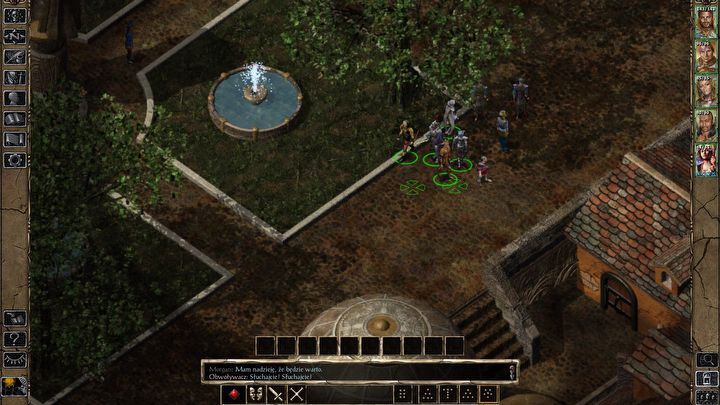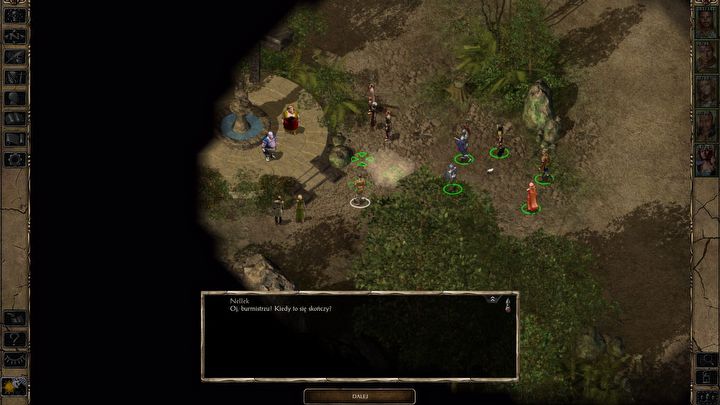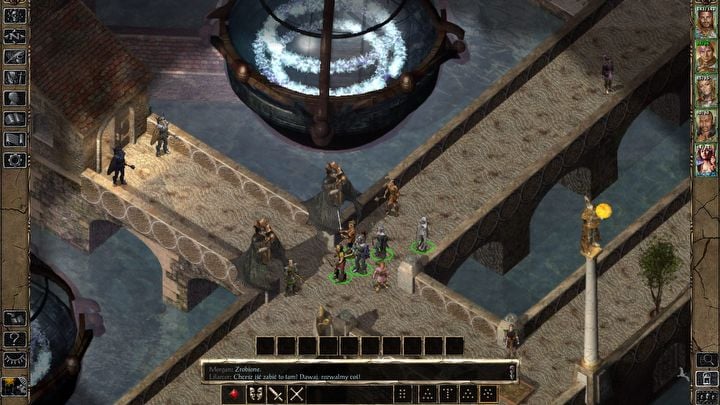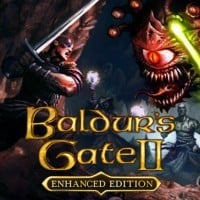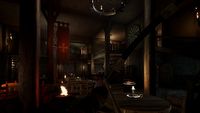Decades Go By, And No One Has Done It Better Than Baldur's Gate 2
Modern RPGs are often grand and beautiful productions, yet in some ways, Baldur's Gate 2 remains the unquestioned king of the genre. The odds are against Baldur's Gate 3, but I wouldn't bet my entire paycheck on it.
2
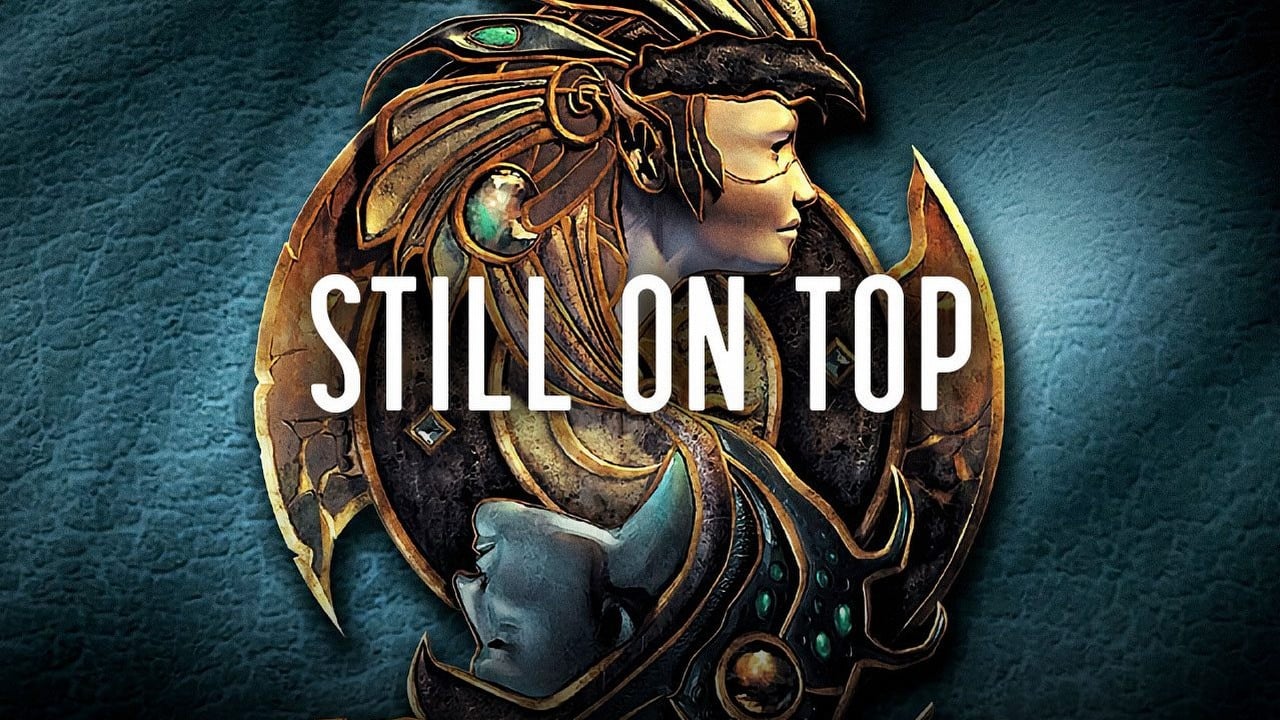
After the release of Baldur's Gate 2, many prettier and larger RPGs appeared, often with a more original world. With full voice overs and more intuitive combat. Before and after, there were also more intellectual ones, such as Planescape: Torment, Tyranny or Disco Elysium. We can list other giants endlessly, such as The Witcher 3, Mass Effect, Dragon Age. Each of these games was better in some way or other, more refined, or at least more advanced, and yet to this day there are several aspects in which Baldur's Gate 2: Shadows of Amn is an unsurpassed exemple. An example so bright that I don't even know if Larian will be able to match this heritage in Baldur's Gate 3.
However, we must admit that if someone is able to do it, it's probably only this team – possibly also Obsidian, if they ever go back to isometric RPGs. Pillars 2 came close, but lacked density and depth (although it's a beautiful game with a good storyline and a lot of interesting solutions).
However, no one has ever accomplished an RPG so close to perfection. Not to a similar extent. Before we proceed, let's remember one thing. If you took the individual components of the BG2 and looked at them through a magnifying glass, you would find that each one is quite simple. Especially from today's perspective. Rather simple mechanics, sometimes downright archaic and crude. Rather simple, archetypal characters and stories. Except that all this is mixed in excellent proportions, intertwined like the threads of some medieval tapestry – and the sum of the whole turns out to be a far more sophisticated work than the individual components would indicate. Thanks to these aspects, Baldur's Gate 2 created a world more alive than in the announcements of Cyberpunk 2077. With this disclaimer, we shall proceed.
Lesson one – motivation!
Don't worry, there will be no coaching today. We'll talk about the story and motivation to gather the party and venture forth. First of all, the core story of Baldur's Gate 2 was simple on the one hand, and complex and imaginative on the other. Quite unique – it took good advantage of the momentum created by the ending of the first "Baldur" and expanded it with a lot of details. Here we wander as the Child of Bhaal, the mortal descendant of the "dedek" god of murder, and we struggle both with our own baggage and some intense individuals who happen to want something from us very badly.
We start Shadows of Amn in the dungeon belonging to one such gentleman. The guy has an unhealthy interest in our powers and origins, keeps us in a cage and performs experiments that should be judged by the Hague tribunal. He is subsequently verified, but not on behalf of the city authorities or administrative bodies, but rather through competition, such as the Faerunian equivalent of mafia, i.e. the Shadow Thieves. We take advantage of a scuffle and run away – but you know how it is. Already on the surface, saying "hello" to freedom, we get right in the middle of a clash between our "host" and the local guardians of magical law and order. As a result of the fight, the madman gets locked tight, but he takes our sister – Imoen.
From a screenwriter's point of view, it's a masterful plot twist. It forces us to face the man (?) who clearly threatens the Child of Bhaal, and if we are only not dead inside – it is also a search for our sister. In addition, the story takes us through the entire social spectrum of the fantasy world. And so we have to run around gang hideouts, cities, ports, mental asylums for magical creatures, ancient ruins with dragons and liches, other dimensions, and, worst of all, various offices. All in order to raise money, gain influence and get information that will allow us to take the sister away and strangle the madman who's got a mania connected to our soul.
Just notice one thing. Contrary to a false but prevalent stereotype – Baldur's Gate 2 is not about saving the world (maybe Throne of Bhaal was, but not entirely). Although the crusade takes the form of a heroic high fantasy journey with powerful magic involved, we are on an almost purely personal mission. And that by nature we get involved in events of cosmic proportions? Well, being the chosen one doesn't always mean saving the world. Even if we save someone along the way, if we show heart – it's only added value, a test of character answering the question of who the Bhaal Child is for this world and what it can give to this place. A test full of Jungian symbols, and at the same time a great embodiment of Campbell's concept of hero's journey (or at least some of its key stages, as the saga is crowned by Throne of Bhaal).
On top of all that, the whole thing was damn romantic. In several ways. It was an adventure of a desperado, a story of struggle with one's own nature, but many threads also revolved around feelings, emotions, tragedy, dashed hopes, and attempts to mend – successful and otherwise. Main and side quests in the game focused on love and passion in different forms. Often unfulfilled and festering, sometimes requiring defense. And I'm not even talking about the romances our hero could get involved in, but about the number of NPCs who wanted to hook up with their family, visit their crush or a spouse's grave. Even the comic-relief Jan Jansen showed his more sensitive side if we only took his quest, not to mention Keldorn, Jaheira, Viconia or Haer'Dalis. Baldur's Gate 2 hit notes that only games like Final Fantasy VI or VII had hitherto dared to strike – and did it just as well, at the same time giving them a unique flair. This whole romanticism in a dark and bitter version was inscribed by another dramatis personae of the Shadows of Amn – Ion Irenicus.
Lesson two – the villain
There have been more spectacular villains in RPGs both before and after the game. They had an amazing lore, like the reapers from Mass Effect – to this day I love rummaging in trivia and fanfic about these Lovecraftian robots – social context and implications, like Caesar with his Legion in New Vegas, philosophical background, such as the adversary from Planescape: Torment, great twist, e.g. in both installments of Knights of the Old Republic, but Ion Irenicus... he was the real thing. As a villain, a co-creator of the illusion of the living world, he just was complete.
We loved hating him, he caused suffering to the living and the dead, all in the name of achieving goals and desires that we got to know during the game. When all the cards were on the table, he hardly gained our sympathy or forgiveness, but understanding he did. Irenicus turned out to be a tragic-romantic figure straight from a Greek tragedy. I mean, he was it long before Shadows of Amn. And we came to sort this guy out. Even if our goals (and we did have a lot of choice here) were equally selfish and bloody as Irenicus's. In the course of history, we could become the opposite of him – or his mirror image. He wasn't concerned with the good of the world, and neither were we. The difference was about what and how we did along the way, but both of these characters fought for deeply personal causes.
In any case, a character that seemed quite crude turned out to be sophisticated and complex. Irenicus appeared to be someone terrifying and powerful, and at the same time, somewhere in the recesses of his personality, he hid the remaining shreds of his once sensitive nature. Once. Ion was a complete villain radiating dark charisma.
Something similar was attempted in Pillars with Thaos, but there, the weight was shifted to a philosophical battle. Divinity: Original Sin 2 also tried a similar approach, but it hid the faces of all our opponents for too long and weaved (although the story turned out to be intriguing and unique in its own way; darker than many claim). Dragon Age 4 also creates a certain play field here, thanks to you-know-who – it's known from the beginning that we will be chasing this person, trying to thwart, or at least understand, their plans. And that should be very similar to the way Irenicus worked, because although the motivations are completely different – the villain will not be hiding in the shadows. At best, he has a few more cards to play. And a few answers to give.
I don't know how Baldur's Gate 3 will do it, because although I played for 10 hours, I can't tell who the main villain will be – the Mind Flayers, a certain fiend or maybe someone else altogether waiting in the shadows – or maybe a whole group or a clique? Larian accents different things than Black Isle or BioWare.
However, chasing Irenicus and his secrets would not be so much fun if we had to run around a dead world. But BioWare, with the support of Black Isle, used a few tricks that brought this 2D world to life.
Lesson three – a living world, cheaply (modern designers hate them)
As it turns out, in order to conjure up the illusion of a vibrant world, you don't need advanced simulation systems (check out the old Virtual Theatre!) nor Cyberpunk-level technology. All it takes is a few clever, committed designers and talented writers to turn a two-dimensional background into a place whose memory will stay with you forever.
The wizards of BioWare only had the Infinity Engine with pixelated men armed with three animations to work with – this, and their creativity.
The game world, the whole of Amn, seemed alive, so spacious – there were plenty of locations – and so deep. Both in terms of area and content. One secret hid another, quests intertwined and took us through many places, we stumbled upon more threads along the way, some related, some starting as branches but turning out to be independent threads.
Stories and tasks were constructed in such a way that we landed in the middle of some scandal, and when we dealt with this problem, the lives of the characters moved on, taking a slightly different course. We entered this world, made changes in it, but everything would go on with or without our participation. We might just be a better solution for someone. Or the worst...
The city itself was simply alive. And that's despite the fact that most NPCs usually stood in one place. The basic component of this illusion was, of course, the intertwined quests that did a great job of showing the character of a given place or group. But it's not everything. Designers placed NPCs, events and scenes, all with a certain panache and a bit of chaos, so Athkatla, in terms of level of order, resembled a slightly more vibrant Denver than other fantasy cities from games. We didn't have the impression of wandering around a hub that was perfectly arranged, walking along a streets that were just a series of corridors with an urban texture (sorry, Dragon Age).
Most of the places could be visited right off the bat, same as a large part of the quests – in the worst case, the opponents would have kicked our asses. There was something to find at every turn, invitations to small but engaging stories, or a great adventure. The density and slightly random arrangement of threads made us feel like we were in a beehive. We came across one of the city's bigger quests just by wandering through the temple district and watching a scene from the heretic's life. The Temple investigation took us so far into Athkatla that normally, the final boss of the game would have been waiting at the end (and that was the case in the first Baldur... sort of).
Honestly, I can't recall a similar density of fleshed-out tasks that were not just fetch quests. Maybe in Arcanum, although the graphics there killed me with deadness and numbness. Thigns did happen in Skyrim (after all), and maybe, but not entirely, in The Witcher 3. In the Polish hit, we encountered many quests on the streets, but as many – we learned more secrets of the city in one sequence of a particular thread, the individual stages of which we unlocked gradually. In "Baldur" many triggers of large quests were just lying around, and they weren't just ordinary hunting tasks from a notice board. Sometimes the NPCs that were useful in later threads would just hang out and live their own lives until we approached them at the right stage of a quest and ruined their day.
In addition to the tasks, you could come across a lot of micro scenes and threads that we could join for a moment, have a conversation, give a piece of unsolicited advise, or not comment at all and move on. In one district, we were accosted by a fanatical priest. He would leave us alone if we answered as he expected – and the cutscene would be over (he could also start a fight if something didn't feel right). On other occasions, we might have passed by a bard clumsily courting a paladin guarding a temple, or might have gotten involved in the dilemma of two lovers who surely weren't named Romeo and Juliet only because the screenwriters had some decency, or leave them alone altogether. Some episodes were ephemeral, others only developed at later stages (every evening we could check whether there was a spark between Mrs. Knight and Mr. Poet). Somewhere in the background was a gang war with thugs and vampires taking it tussling in the streets, and we could as well pass it all by indifferently – as long as we moved away fast enough.
There were plenty of such scenes, random encounters, sometimes leading to quests, and sometimes being exactly what we saw. The background seemed alive regardless of our actions. And it was done using very limited tools, often it only required a few lines of text, a simple script and a few ready-made character models (even many important heroes were represented by very basic pixel models). In fact, most of these background characters were not voiced, except for some basic remarks.
Thanks to these moves, backtracking became an advantage, an asset. We had to return to the city, because through our actions and choices it was changing bit by bit, in many locations, we could face the consequences of what we had done. As in life, we returned to the same places and watched how they'd changed. And in the next chapters came new tasks, new encounters – the closer to the end, the more focused on the main storyline, but still.
Nevertheless, I understand why it's so difficult to copy Baldur's Gate 2, even despite pure intentions. Back then, more than twenty years ago, mind you, this impression of animate chaos was easier to achieve.Today's technologies require more work and entail more costs (character models, 2D/3D animations, directing, voice acting, complex scripts and coding), especially since the voice acting of all characters is becoming a standard even in indie, isometric cRPGs. However, many have tried. At times, they were successful, as in the second Pillars and Divinity: Original Sin 2, but even there, it was easier to see through this "hub illusion" – at least in terms of this particular weight category.
All in all, I have nothing against someone trying a similar procedure in a modern game – with only the main characters and some of the essential subplots having recorded lines of dialogue, and the rest being just text. But this may be the perspective of a dinosaur, whose still bears remnants of Baldur's Gate 2. Voicing characters with AI voice models seems a valid alternative today, if everyone needs their own voice in a game, but honestly? I don't know how to feel about it ethically. Nevertheless, technologies, tools and editors are increasingly harnessed by creators.
Exam
I don't know if Larian will be able to handle all that. The balance between life and chaos, vibrancy and clarity. Once, in Divine Divinity, and even in Divinity: Original Sin, the studio was able to create vast and cavernous worlds (we could return to locations from previous acts), but Original Sin 2 showed a different approach, an equally deep (in terms of the complexity of the story and locations; with a ton of variables in addition), but also more fragmented game that didn't feel as organic. A rigid division into acts with separate locations was used here, and we do not backtrack after the end of a given stage. Baldur's Gate 3 is built on a similar framework and if I'm afraid of something – it's exactly this, because the freedom of movement (except for a few key chapters) was part of the charm of this series, even in the lavish and refined part two.
As for the plot and characters, I'm rather calm, even though it's a different approach to writing and directing than BioWare, Black Isle or Obsidian's.
I believe that Baldur's Gate 3 will be a great game, maybe even an outstanding one, and will set such high standards that neither ambitious independent studios nor AAA powerhouses will be able to meet them (poor Dragon Age 4 – but I'm waiting for it nonetheless). Remember that both previous Baldur's Gate were different from each other, and from other RPGs, hauling the genre forward like an eighteen-wheeler.
Larian Studios, on the other hand, is an incredible fruit salad of talent, madness and creative discipline. And thanks to this, Baldur's Gate 3, despite its differences, will be as legitimate an installment of the series as its two legendary predecessors. And it will probably contribute to the evolution of RPGs. The Belgians will just do it on their own terms. Let the rest at least catch up with Baldur's Gate 2 in the meantime.
2

Author: Hubert Sosnowski
He joined GRYOnline.pl in 2017, as an author of texts about games and movies. Learned how to write articles while working for the Dzika Banda portal. His texts were published on kawerna.pl, film.onet.pl, zwierciadlo.pl, and in the Polish Playboy. Has published stories in the monthly Science Fiction, Fantasy, and Horror magazine, as well as in the first volume of the Antologii Wolsung. Lives for "middle cinema" and meaty entertainment, but he won't despise any experiment or Fast and Furious. In games, looks for a good story. Loves Baldur's Gate 2, but when he sees Unreal Tournament, Doom, or a good race game, the inner child wakes up. In love with sheds and thrash metal. Since 2012, has been playing and creating live action role-playing, both within the framework of the Bialystok Larp Club Zywia, and commercial ventures in the style of Witcher School.
Latest News
- „They're a bit outdated.” Baldur's Gate 3 director warns those who want to „prepare” for Divinity by playing older installments
- „It's an unimaginable loss.” Gaming industry reacts to the death of Vince Zampella, one of the fathers of modern first-person shooters
- Fallout 3 was described as „Oblivion with guns” and the studio decided to bet on this instead of fighting it
- 2 historic Fallout games available on Amazon Prime Gaming
- Sony is alarming players with an idea that seems to be taken straight from Black Mirror. It's about censoring video games in real time
